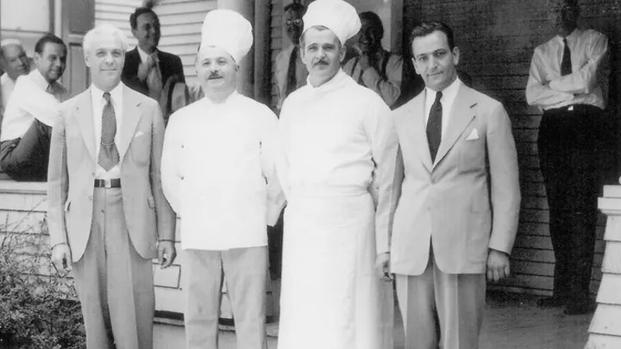When Allied troops stormed the beaches of Sicily on July 10, 1943, they expected brutal combat in what Winston Churchill called "the soft underbelly of Europe." In most cases, they got what they expected. What they didn't expect was to fall in love with some of the local cuisine, especially a simple flatbread topped with tomato sauce, oregano and cheese: Pizza.
Before the Italian Campaign, pizza was almost unknown outside Italian immigrant neighborhoods. In 1939 the New York Herald Tribune felt compelled to explain what "peet-za" was and how to pronounce it. The dish remained confined largely to immigrant communities in cities like New York, Boston and Chicago, where Southern Italians had opened small pizzerias beginning in the early 1900s.
WWII changed that. From 1943 to 1945, hundreds of thousands of American GIs fought through Southern Italy, where oregano grew abundantly and pizza was a local staple. Field reports from the Fifth Army noted that nearly all soldiers questioned said they had lost weight during the Italian Campaign. K-rations, designed for short-term use, became the daily source of sustenance despite containing insufficient calories for men fighting in extreme conditions. Soldiers were often quite vocal about how they detested the rations.
Italian immigrant Hector Boiardi played an unexpected role in introducing soldiers to Italian flavors. According to NPR, Boiardi, who later Americanized his name to Chef Boyardee, was a major food supplier to the U.S. Army during the war. His Milton, Pennsylvania, factory operated 24 hours a day and employed 5,000 workers at its peak, producing thousands of cans of spaghetti in tomato sauce for troops.

Soldiers around the world, not just ones fighting in Italy, preferred the canned Italian food to their standard rations. For many, it was the first time they tasted Italian food. The U.S. government later awarded Boiardi the Gold Star order of excellence for his contributions to the war effort.
For soldiers fighting up the Italian peninsula, they often encountered locals who were willing to share their little bit of food with their liberators. The soldiers welcomed such hospitality, anything to avoid relying on their standard-issue rations. Italian civilians invited American troops into their homes and provided them with pasta, pizza, wine, and other culinary delights that the soldiers fell in love with.
When the soldiers returned home after the war, the demand for Italian food increased dramatically. Between 1948 and 1956, oregano sales in the United States rose by more than 5,000 percent. Celebrity chef Lidia Bastianich told NPR that when she arrived in America more than a decade after the war, oregano was now an abundant ingredient in Italian-American restaurants and pizzerias.
The infrastructure to support pizza's expansion also followed quickly. In 1945, WWII veteran Ira Nevin returned from Italy to his family's oven-building business in New York and helped develop the first gas-fired, ceramic-deck pizza oven, according to Tasting Table. These Bakers Pride ovens could be mass-produced and replaced traditional brick-and-coal ovens, making it economically feasible for restaurants across the country to make and serve pizza.
Over the next 15 years, independent pizzerias began spreading across America. Now-famous Pizza chains were founded during this time. Shakey's Pizza opened in 1954, Pizza Hut in 1958, Little Caesars in 1959 and Domino's in 1960.
By 1953, Dean Martin's "That's Amore" peaked at No. 2 on the Billboard charts. The song's reference to pizza pie signaled how thoroughly the dish had entered mainstream American culture. Just a decade earlier, most Americans outside Italian neighborhoods had never heard of pizza and those that had could barely pronounce it.
The Italian Campaign claimed more than 300,000 Allied casualties over nearly two years of fighting. However, it also introduced hundreds of thousands of American soldiers to a food that would become a defining part of American cuisine.
Today, Americans consume billions of pizzas annually, unknowingly influenced by soldiers who brought home a taste for what they encountered during some of the war's most brutal fighting.















